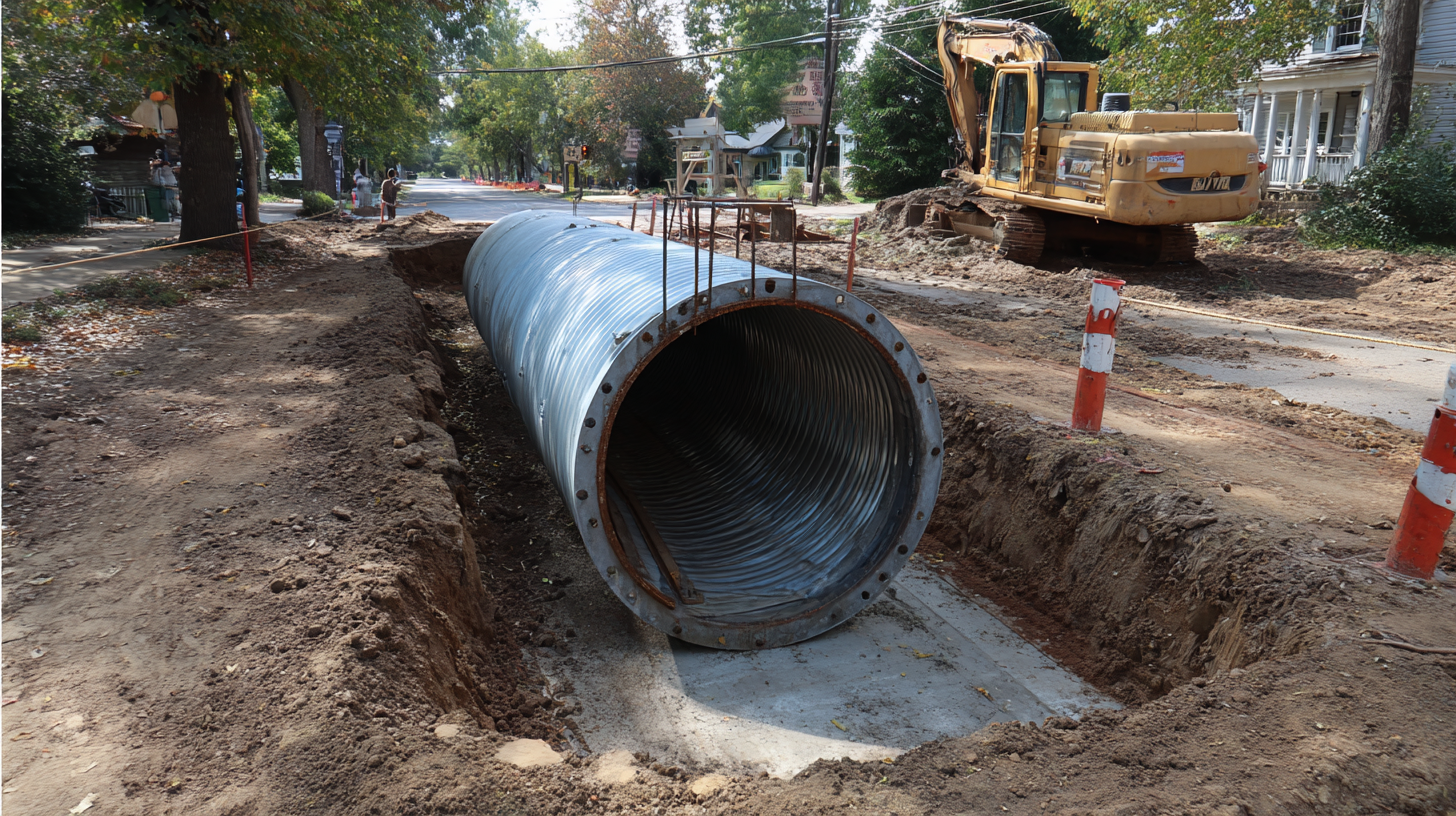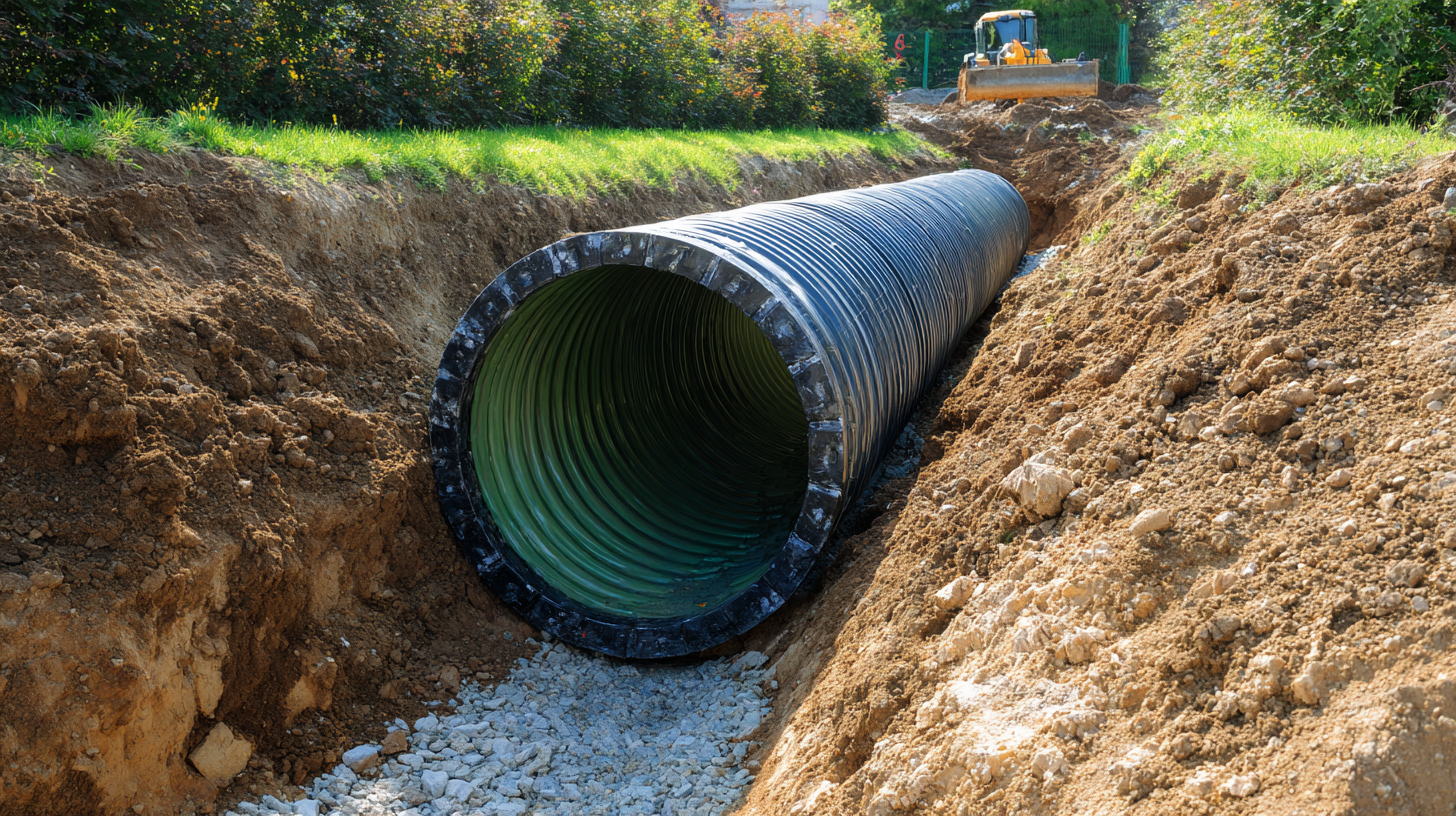The installation of storm drain pipes is a critical aspect of urban infrastructure design, directly influencing environmental management and public safety. According to the Environmental Protection Agency (EPA), effective stormwater management systems can reduce flooding by up to 80%, highlighting the importance of well-designed storm drain pipe systems in mitigating urban runoff. However, as cities continue to grow and face the challenges of climate change, installation projects often encounter common obstacles such as soil instability, budget constraints, and regulatory compliance. A recent industry report from the American Society of Civil Engineers indicates that nearly 30% of stormwater management projects face delays due to inadequate planning and unexpected site conditions. Addressing these challenges through innovative solutions not only enhances the efficiency of storm drain pipe installations but also contributes to the sustainability and resilience of urban environments. This blog will explore the various benefits of overcoming these challenges and the pivotal role that storm drain pipes play in creating robust stormwater management systems.

Storm drain pipe installations are crucial for managing urban runoff and preventing flooding, yet they often face several common challenges. One significant issue is the improper alignment of pipes during installation, which can lead to blockages and reduced drainage efficiency. When pipes are not correctly aligned, sediment accumulation can occur, causing backups that compromise the integrity of the whole stormwater management system. Over time, these blockages can lead to larger infrastructure problems and increase maintenance costs for municipalities.
 Another challenge is the variability in soil conditions across urban areas. When installers encounter unexpected soil types, such as clay, silt, or rocky substrates, it can complicate the installation process and require additional resources. Poor soil drainage properties may also affect the performance of the storm drain system, leading to inadequate water management and potential flooding during heavy rainfall. Addressing these challenges requires careful planning, precise execution, and ongoing maintenance to ensure that the storm drain systems function effectively and protect urban infrastructure.
Another challenge is the variability in soil conditions across urban areas. When installers encounter unexpected soil types, such as clay, silt, or rocky substrates, it can complicate the installation process and require additional resources. Poor soil drainage properties may also affect the performance of the storm drain system, leading to inadequate water management and potential flooding during heavy rainfall. Addressing these challenges requires careful planning, precise execution, and ongoing maintenance to ensure that the storm drain systems function effectively and protect urban infrastructure.
Storm drain systems play a crucial role in managing surface runoff, and understanding key industry statistics regarding storm drain size and flow capacity is essential for effective installations. According to recent studies, the average flow capacity of storm drains must accommodate various rainfall intensities, with best practices suggesting a minimum pipe diameter of 12 inches in urban areas. For areas prone to higher rainfall, larger diameters between 18 and 24 inches are often recommended to ensure optimal water flow and prevent flooding.
Additionally, the design and installation of storm drains must comply with specific requirements based on regional climate data. A review of industry standards indicates that storm drain systems should be capable of handling a minimum 10-year storm event, which is often quantified in cubic feet per second (CFS). For instance, in many metropolitan areas, it’s essential to calculate the areas contributing to each drain to accurately size the system, thereby reducing the risk of overflow. By focusing on these key statistics, engineers and planners can significantly enhance the efficiency and reliability of storm drainage systems, thus mitigating the common challenges faced during installations.
When it comes to storm drain pipe installations, adhering to best practices is crucial to minimizing installation errors that can lead to significant issues down the line.
One key practice is thorough site assessment before digging begins. This involves understanding the topography and existing underground utilities, which helps in avoiding damage to other infrastructures and ensures that drainage systems are optimally placed.
Engaging in a detailed planning phase allows for adjustments based on environmental factors, ultimately promoting the longevity and efficiency of the storm drain system.
Another essential best practice is the implementation of stringent quality control measures during the installation process. Regular inspections should be conducted at each phase to verify that materials meet specifications and that installation techniques conform to industry standards.
Proper alignment and slope of pipes are critical, as even minor deviations can lead to severe blockages and maintenance headaches.
Training personnel on proper techniques and potential pitfalls can further reduce errors, ensuring that each installation is up to the highest standards and prepared to handle stormwater effectively.
The durability and performance of storm drain pipe installations are increasingly crucial in urban planning, as cities face rising challenges from extreme weather events and shifting climate patterns. Innovative technologies have emerged to enhance the resilience of these systems, leveraging materials and designs that can withstand the stresses of both time and nature. For instance, the use of high-density polyethylene (HDPE) pipes offers superior resistance to corrosion and impact, significantly extending their lifespan compared to traditional materials.
Moreover, advancements in trenchless technology have revolutionized pipe installation and maintenance processes. Techniques such as pipe bursting and horizontal directional drilling allow for seamless installation with minimal disruption to surrounding infrastructure. These methods not only reduce the environmental impact but also improve the efficiency of storm drain systems by optimizing flow capacity. By integrating smart monitoring systems, municipalities can also gain real-time insights into the performance of storm drains, identifying potential issues before they escalate. This proactive approach ensures that stormwater management remains effective, protecting urban areas from flooding while maintaining the integrity of essential drainage infrastructure.
| Challenge | Innovative Technology | Benefits | Durability Enhancements | Performance Metrics |
|---|---|---|---|---|
| Clogging | Self-cleaning surfaces | Reduced maintenance costs | Increased lifespan of pipes | 95% less clogging incidents |
| Erosion | Reinforced pipe materials | Enhanced structural integrity | Longer service life under stress | 30% increase in durability ratings |
| Leakage | Smart monitoring systems | Early detection of leaks | Minimized environmental impact | Reduction in leakage by 75% |
| Blockage from debris | Advanced filtration systems | Improved flow capacity | Less frequent cleaning needs | 40% improvement in flow rates |
Storm drain installations are crucial for effective stormwater management, yet they often encounter various complications that can significantly affect project budgets. According to a report by the American Society of Civil Engineers (ASCE), inadequate planning, unexpected site conditions, and regulatory changes contribute to cost overruns in nearly 30% of drainage projects. This underscores the importance of thorough site assessments and budget allowances for unforeseen expenses when initiating storm drain installations.
Furthermore, the National Association of Clean Water Agencies (NACWA) highlights that the average cost for stormwater management projects can range from $20,000 to $50,000 per acre, depending on location and the complexity of the installation. Issues such as soil erosion, the need for additional permits, and the integration of green infrastructure elements can result in costs escalating beyond initial estimates. By incorporating contingency budgets of at least 10-15%, project managers can mitigate the financial impacts of these common challenges and ensure smoother implementation of storm drain systems.

